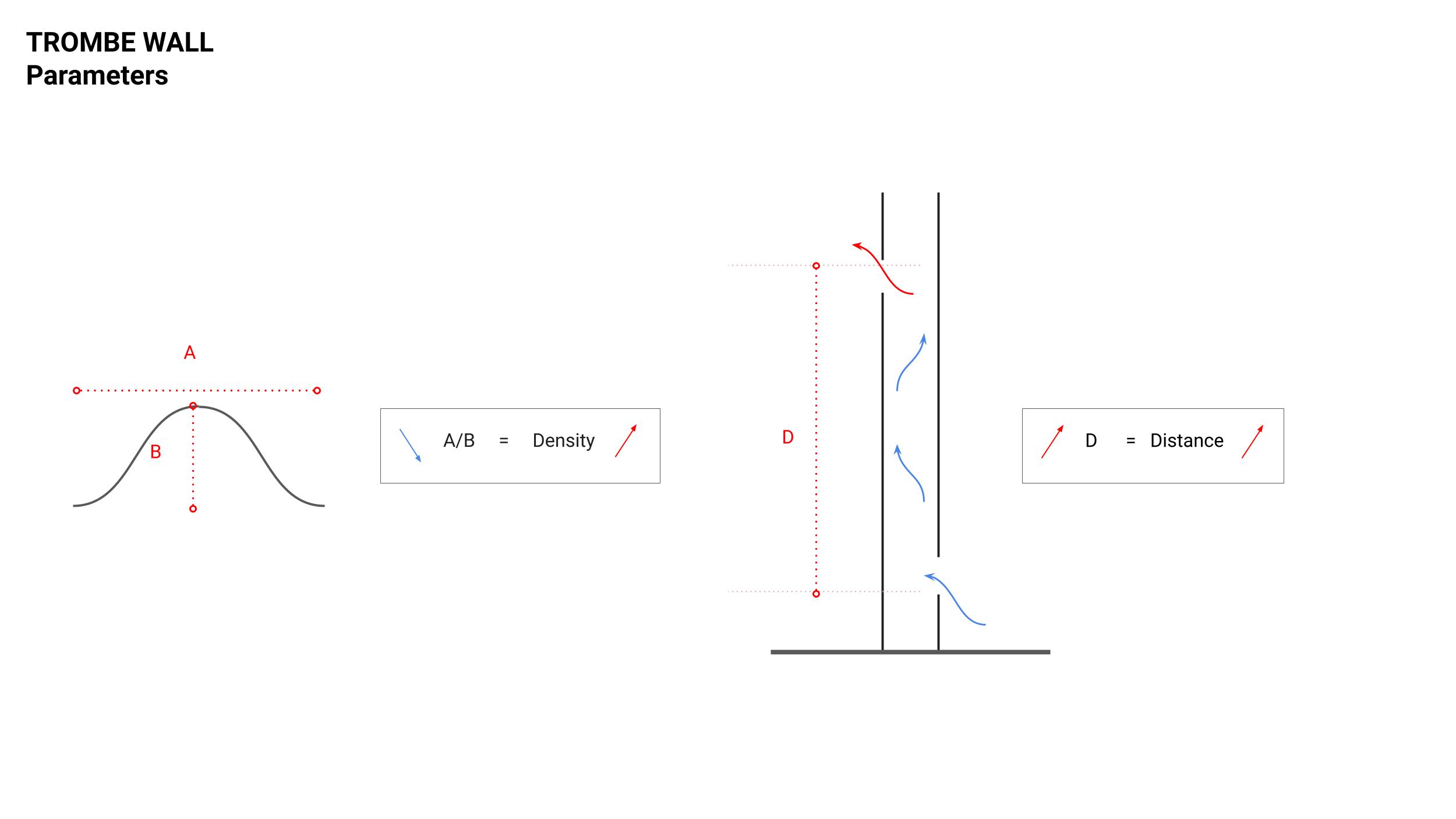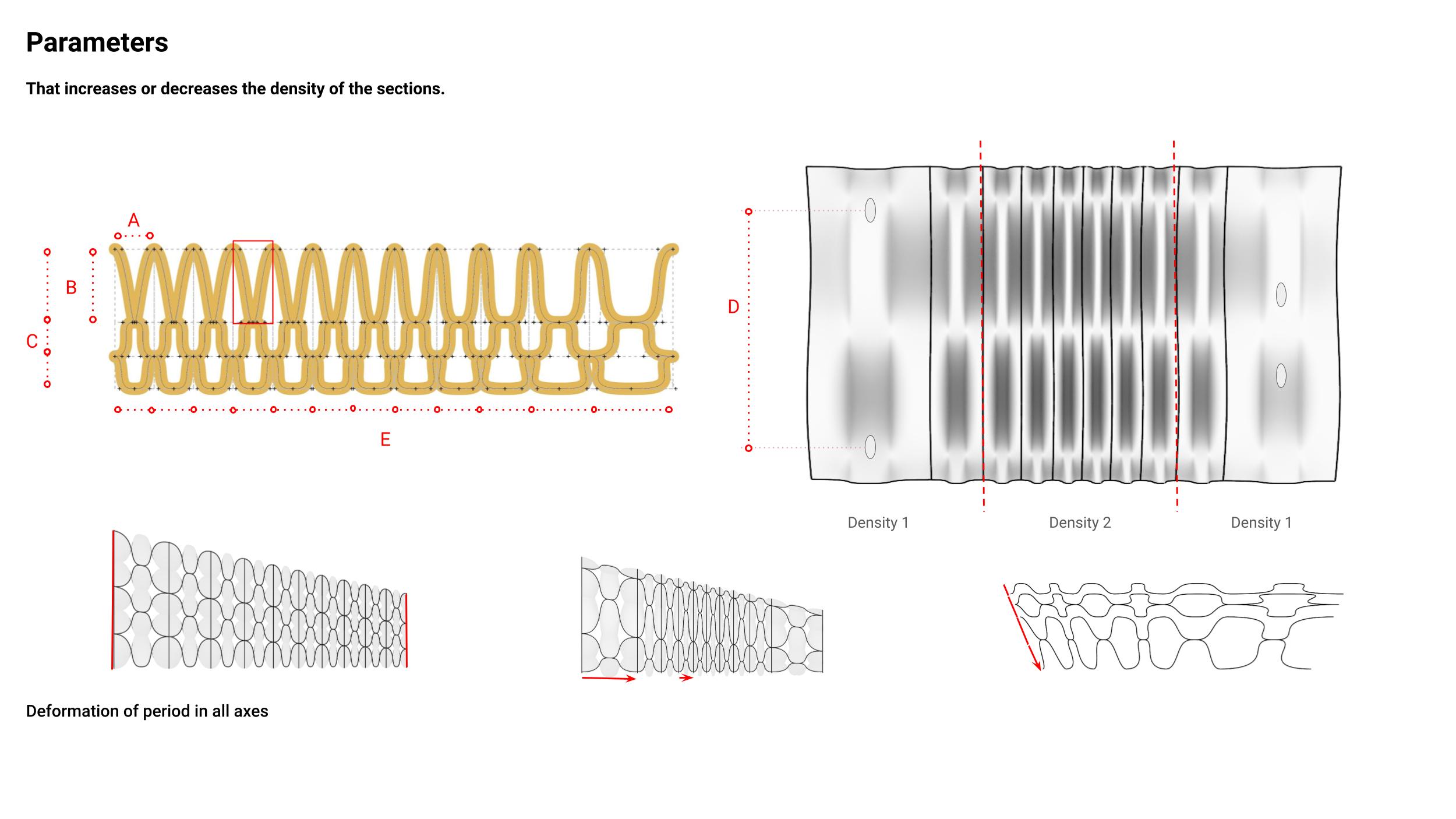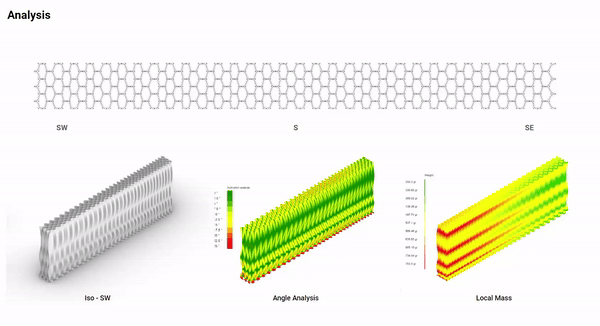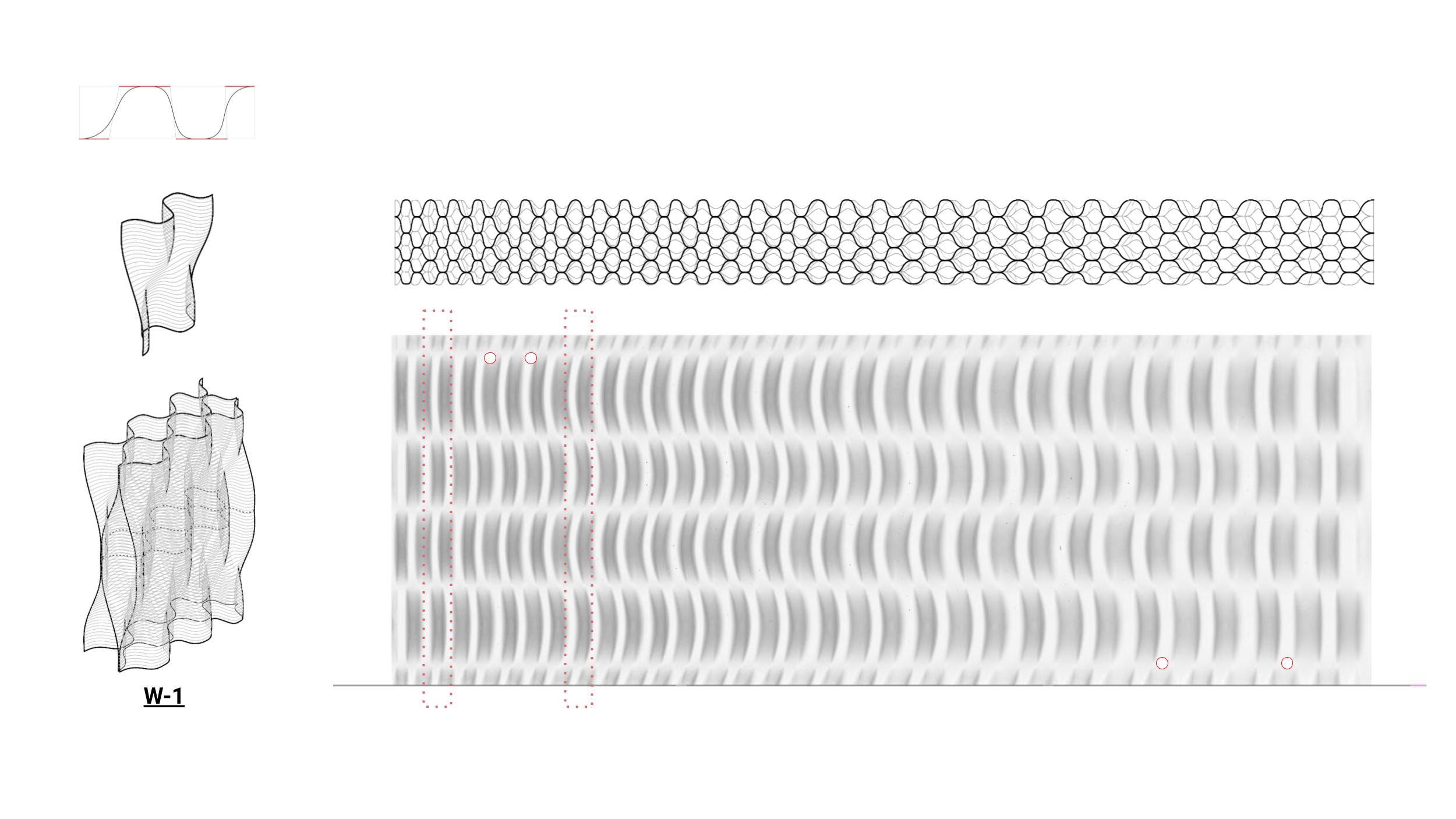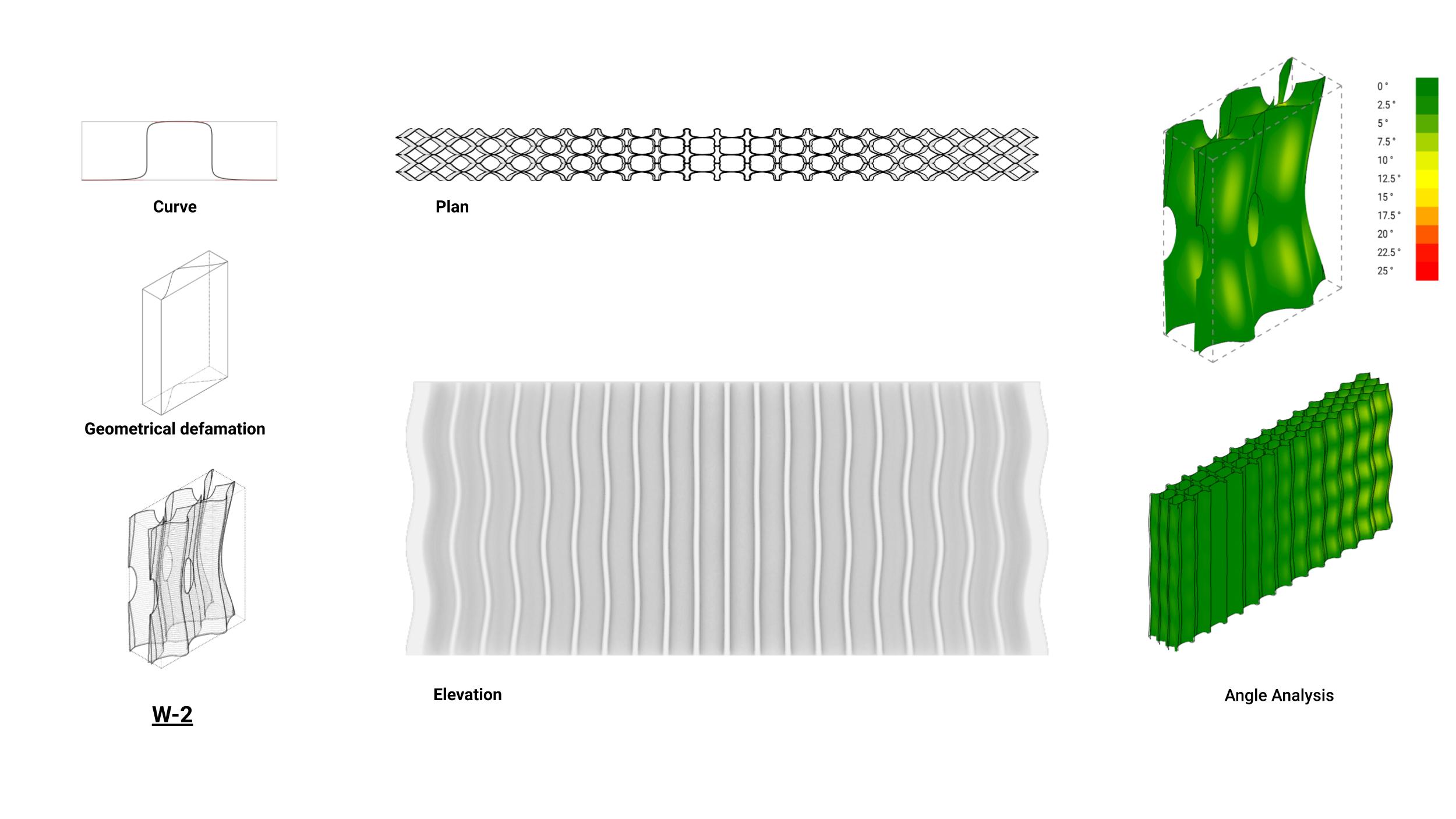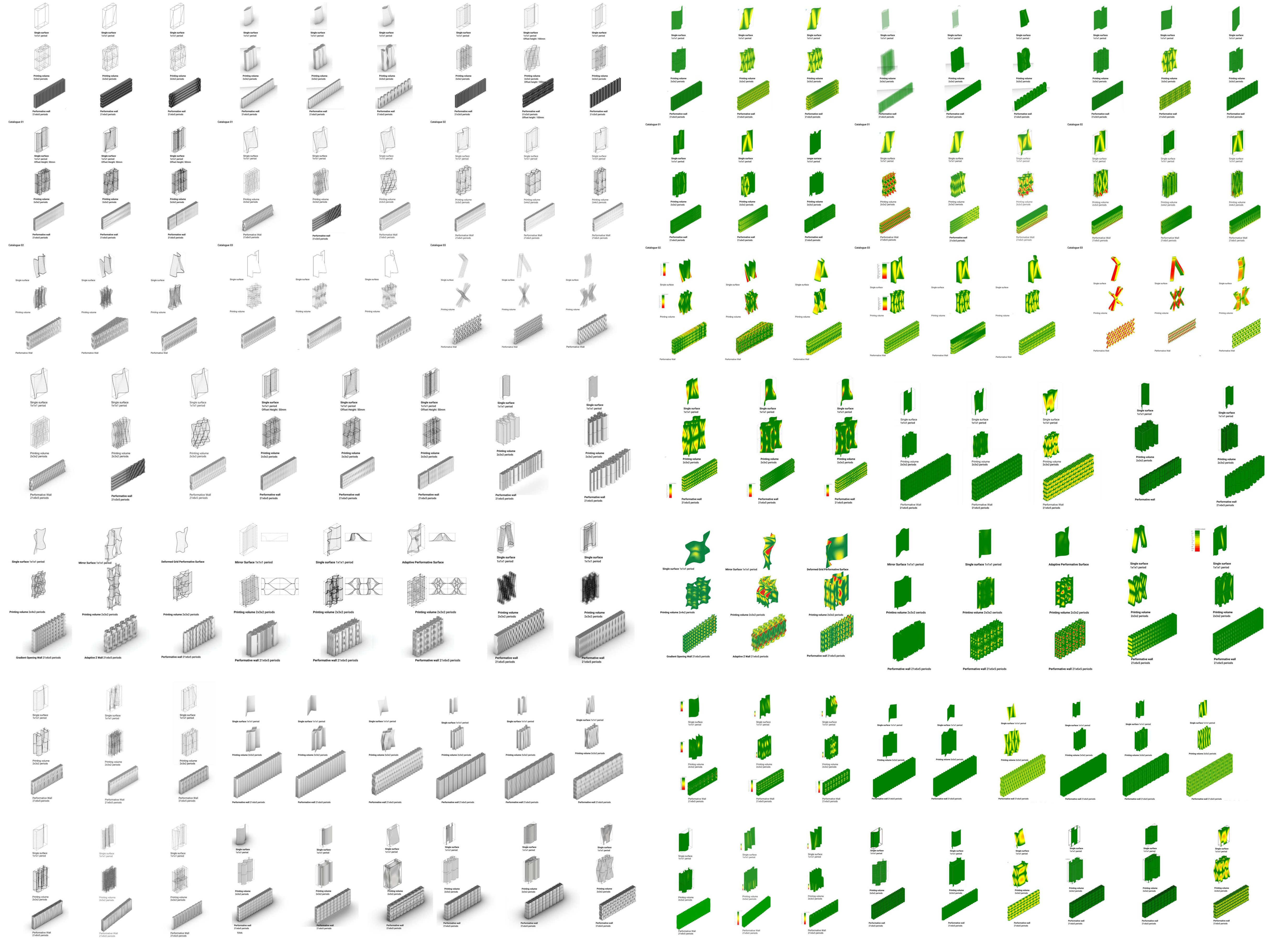
After exploring periods in 2D and their capacity to deform, promising periods were tested in 3D to mitigate certain climatic phenomena and achieve various climatic performances, such as heat storage capacity of matter, ventilation, self-shading, and daylight allowance.
Heat Storage Capacity of Matter
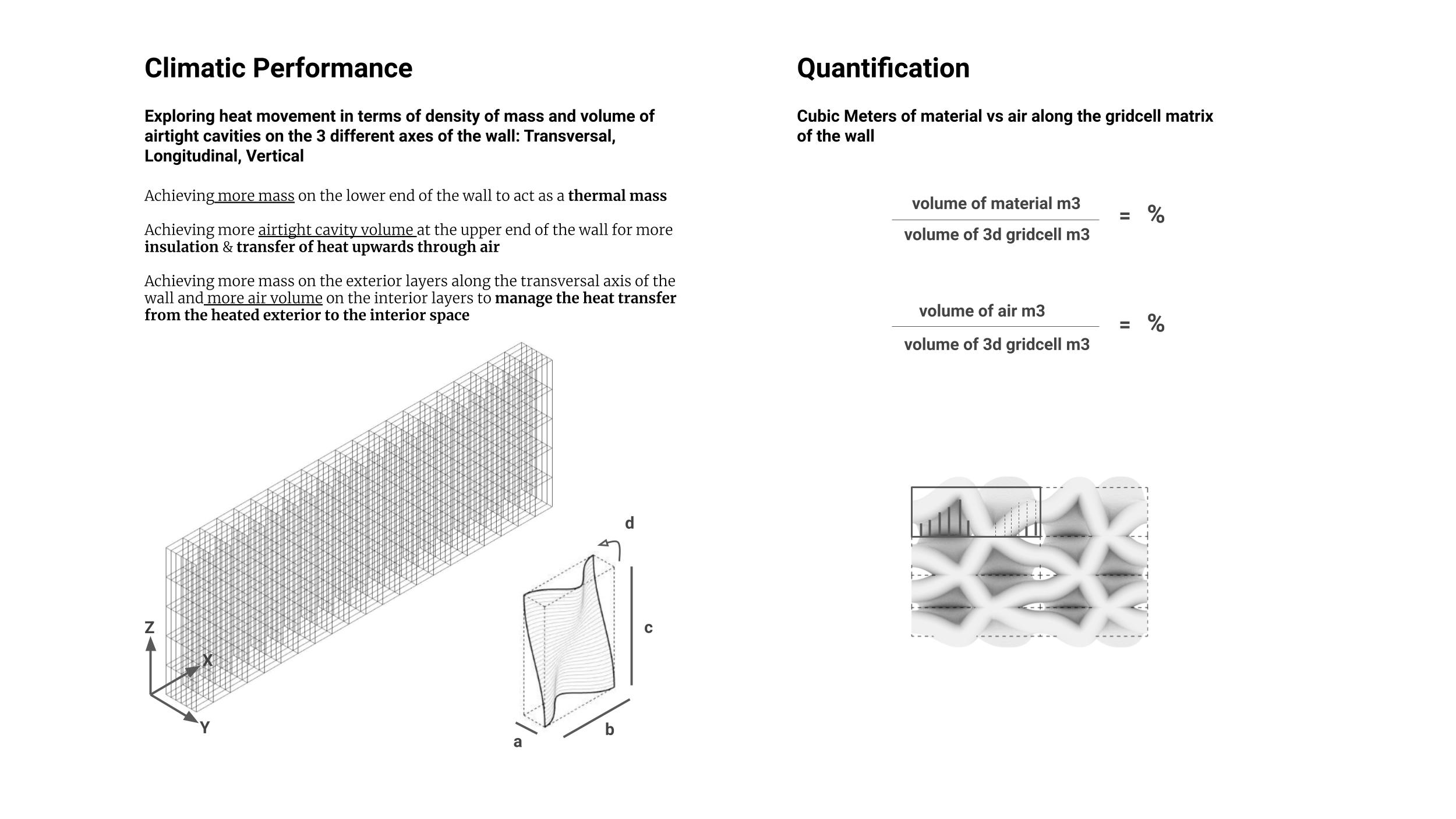
To test this, a catalogue of deformation along 3 different axes was tested. Then, combinations of these deformations were selected as per the climatic benefits they provided. For example, deforming along the z axis means a higher thermal mass occurs on the lower portion of the wall, and deforming along the y axis transversal to the wall’s length achieved more cavity insulation towards the exterior of the wall.
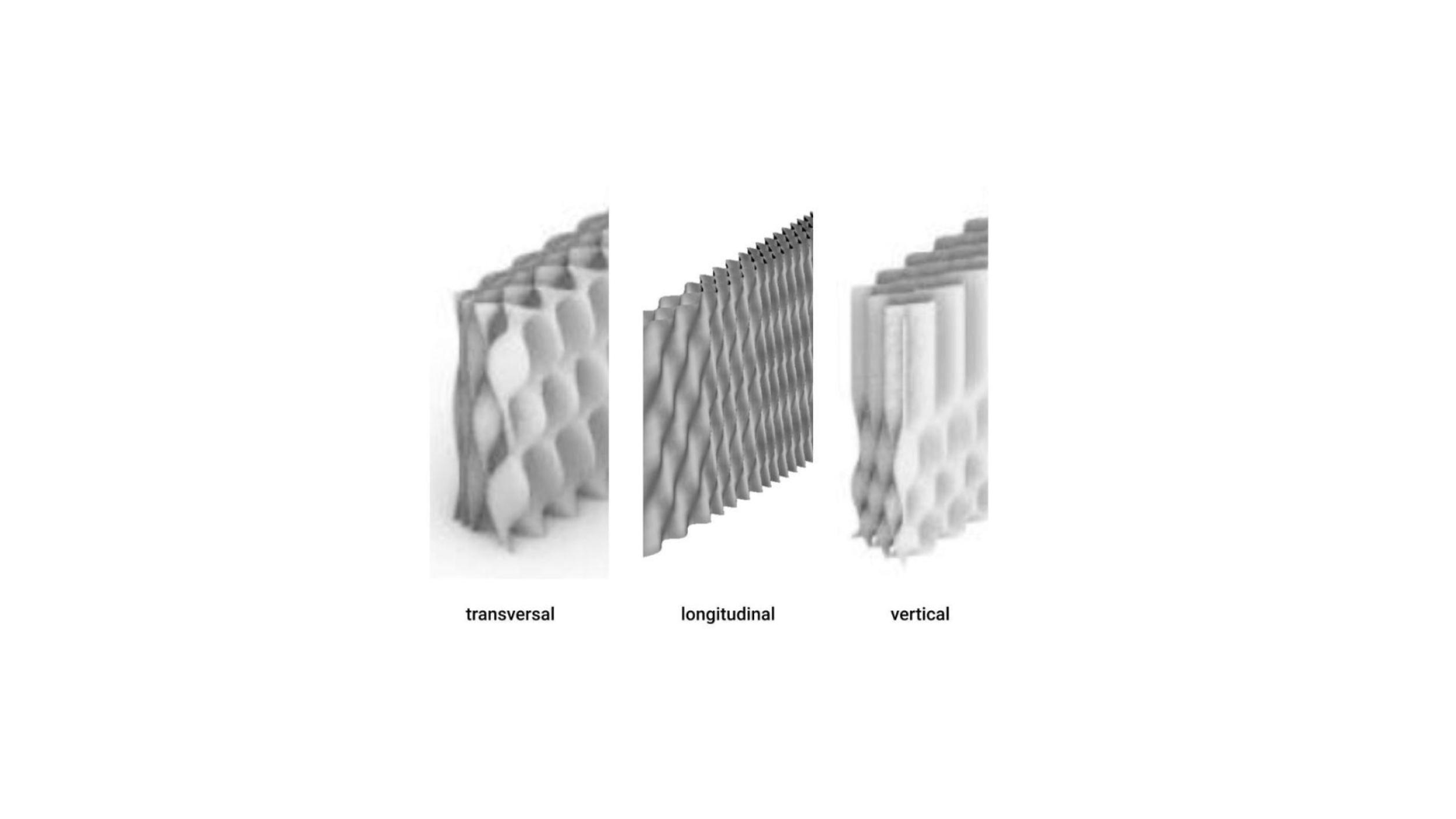
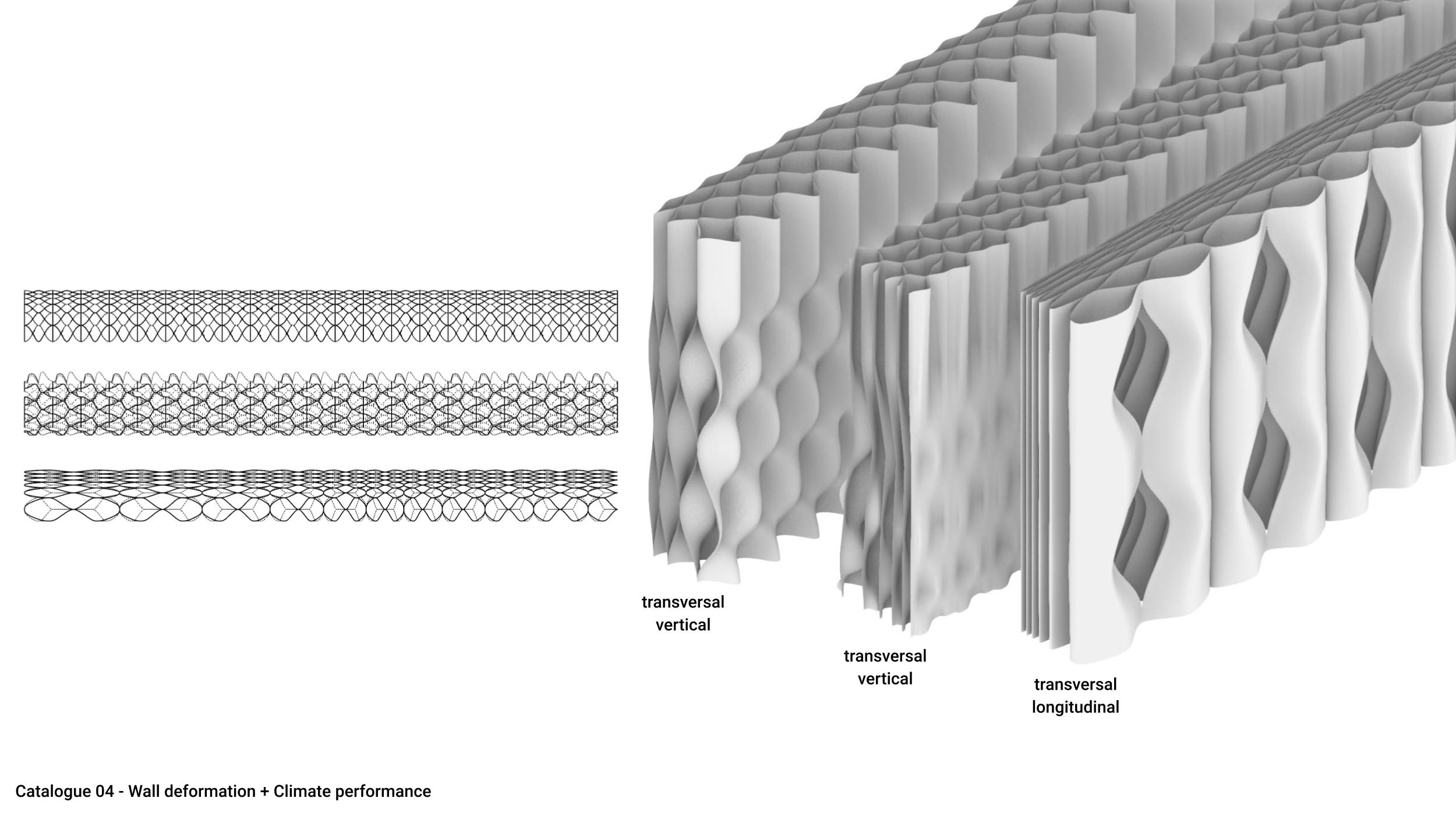
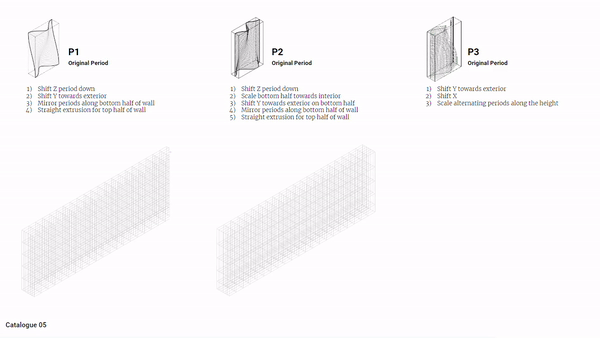

To quantify this change for comparison, a measurement system is proposed by calculating the ratio of material to air to potentially openings to compare the deformations and their effects on thermal transmission versus insulation.
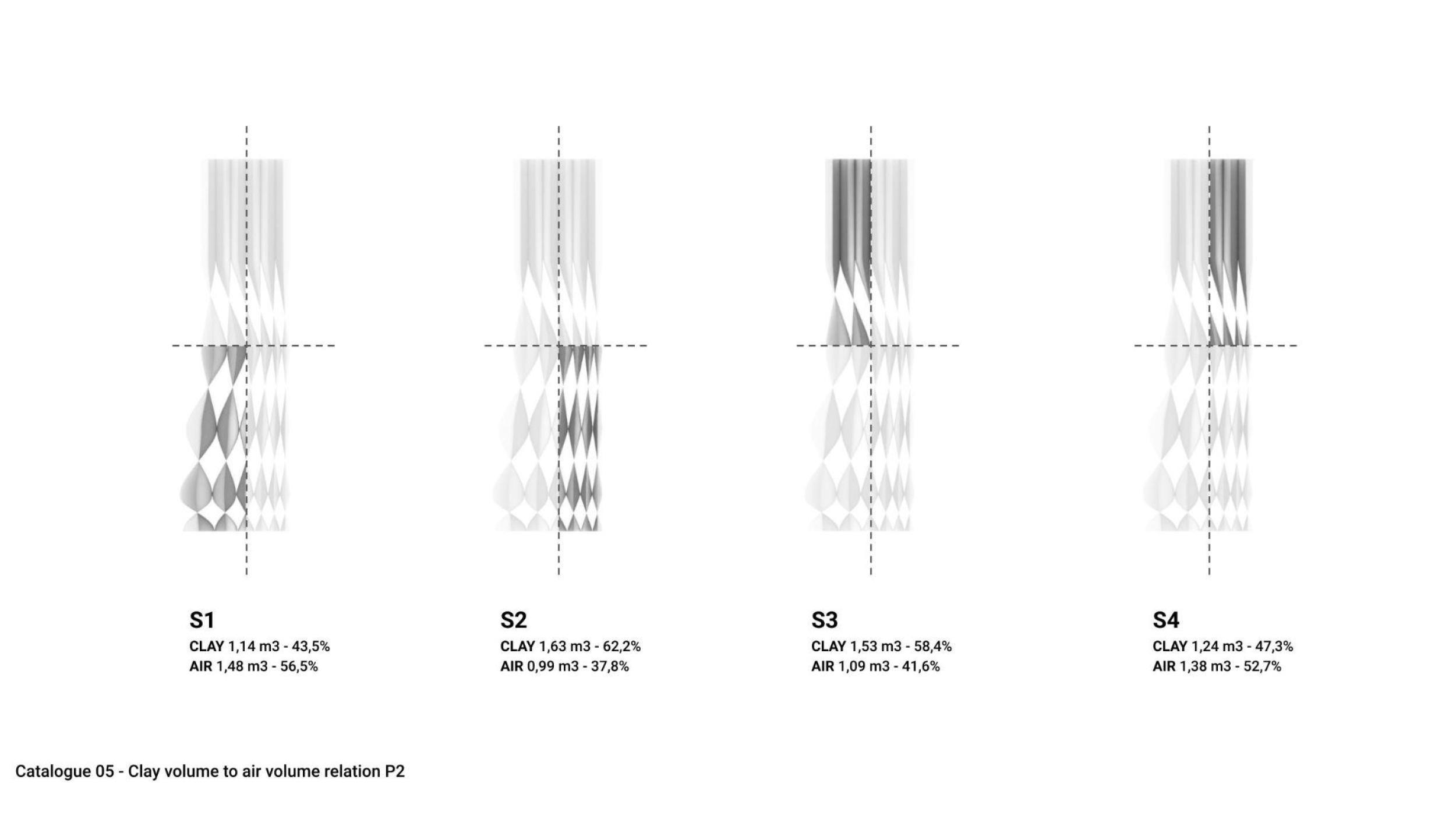

Passive Air Circulation & Ventilation
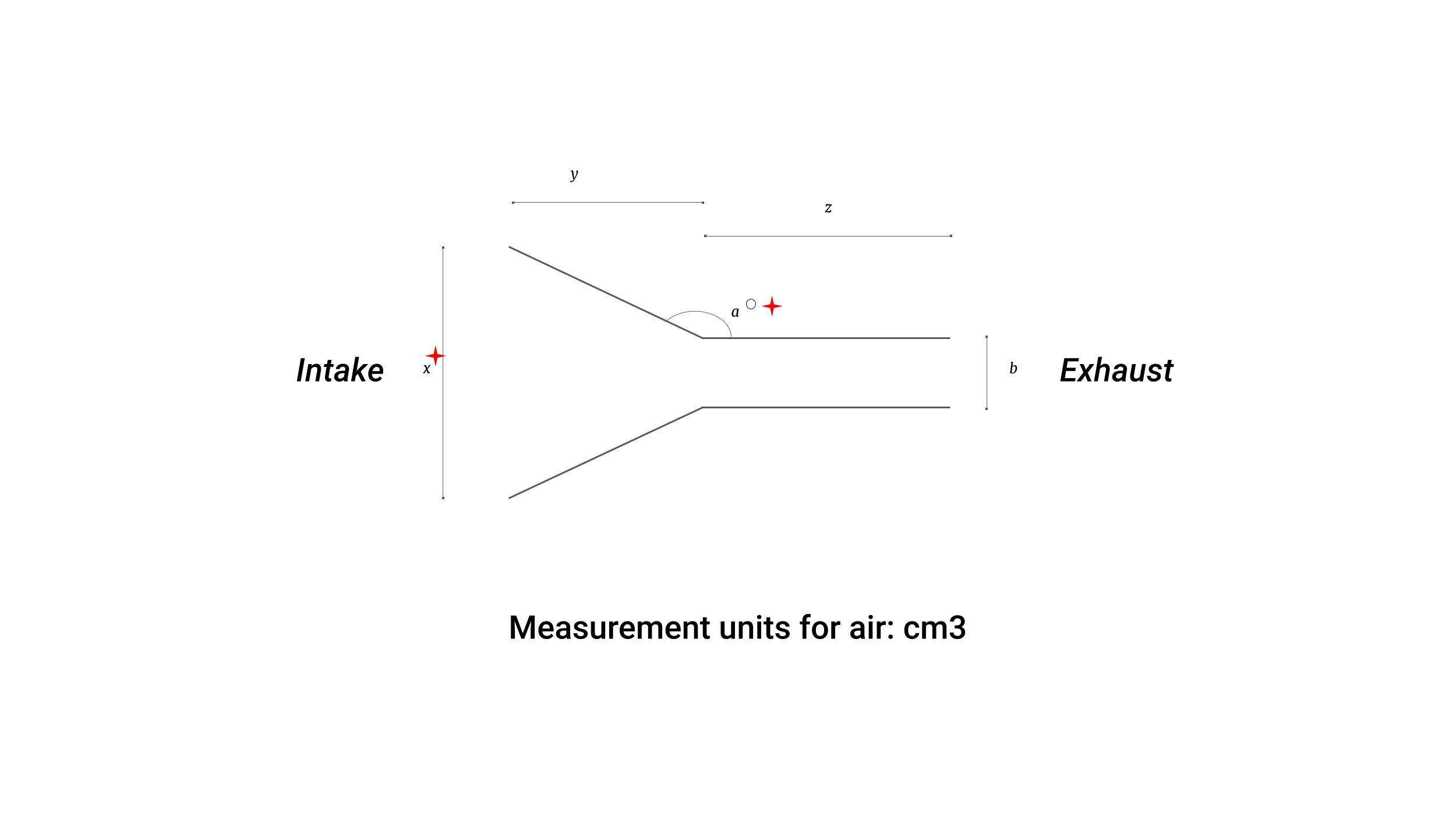
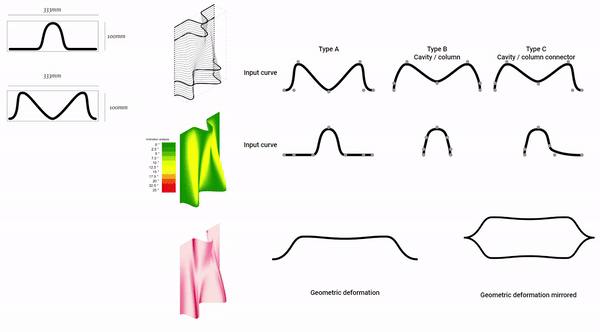
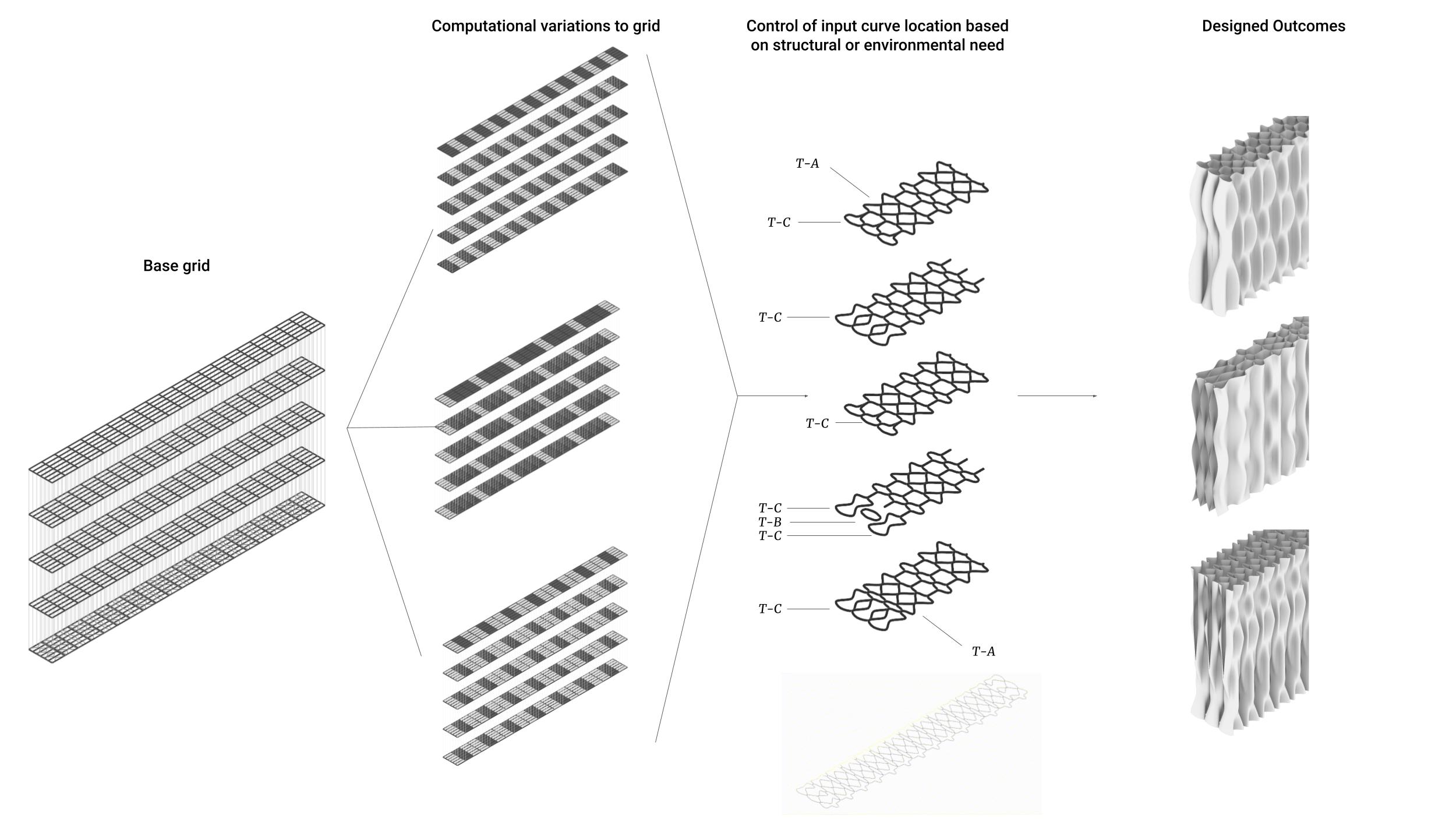
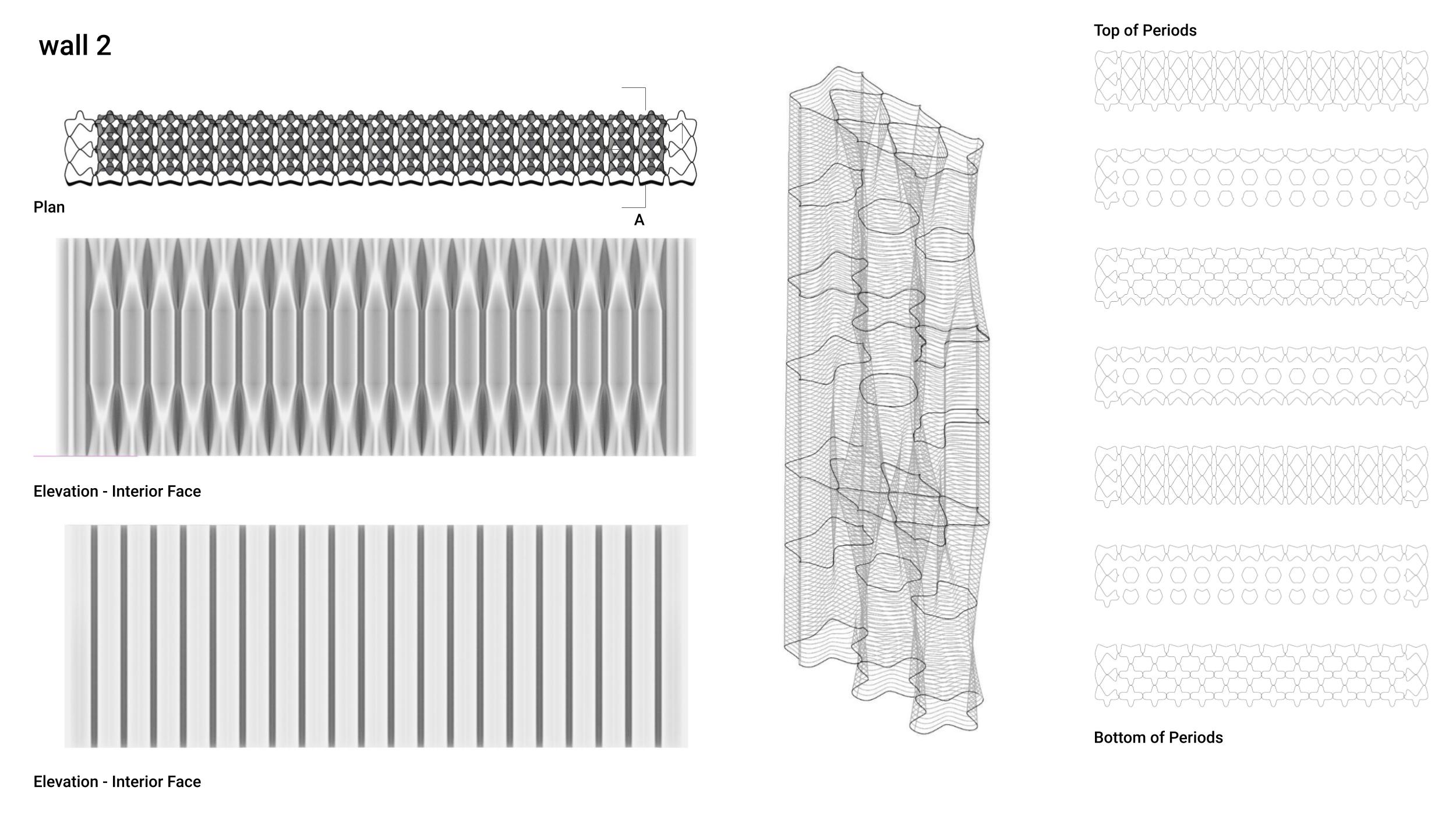
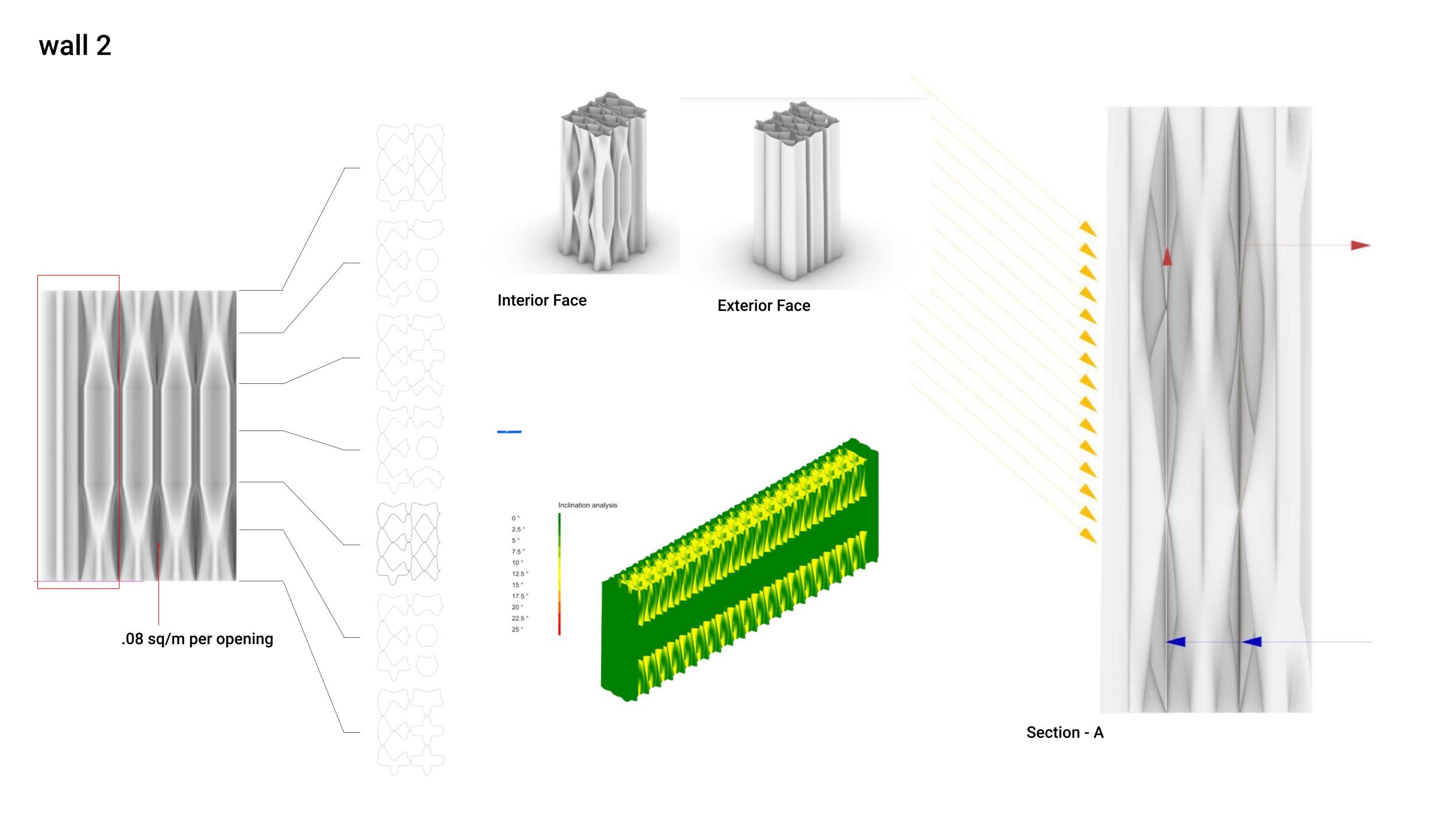
Conclusions
Funnel-like Geometry: Designed to optimize air movement.
Natural Cooling System: Draws cool air from the bottom and warm air from the top.
Temperature Regulation: Balances indoor and outdoor climates through airflow patterns.
Thermal Performance: Utilizes thermal properties to enhance cooling.
Sun Path Studies: Included in final design to analyze warmer air concentration.
Geometric Design:
- Thicker mass at the bottom for thermal storage.
- Thinner gradient at the top to facilitate airflow.
Chimney Effect: Mimics chimney qualities to promote natural cooling.
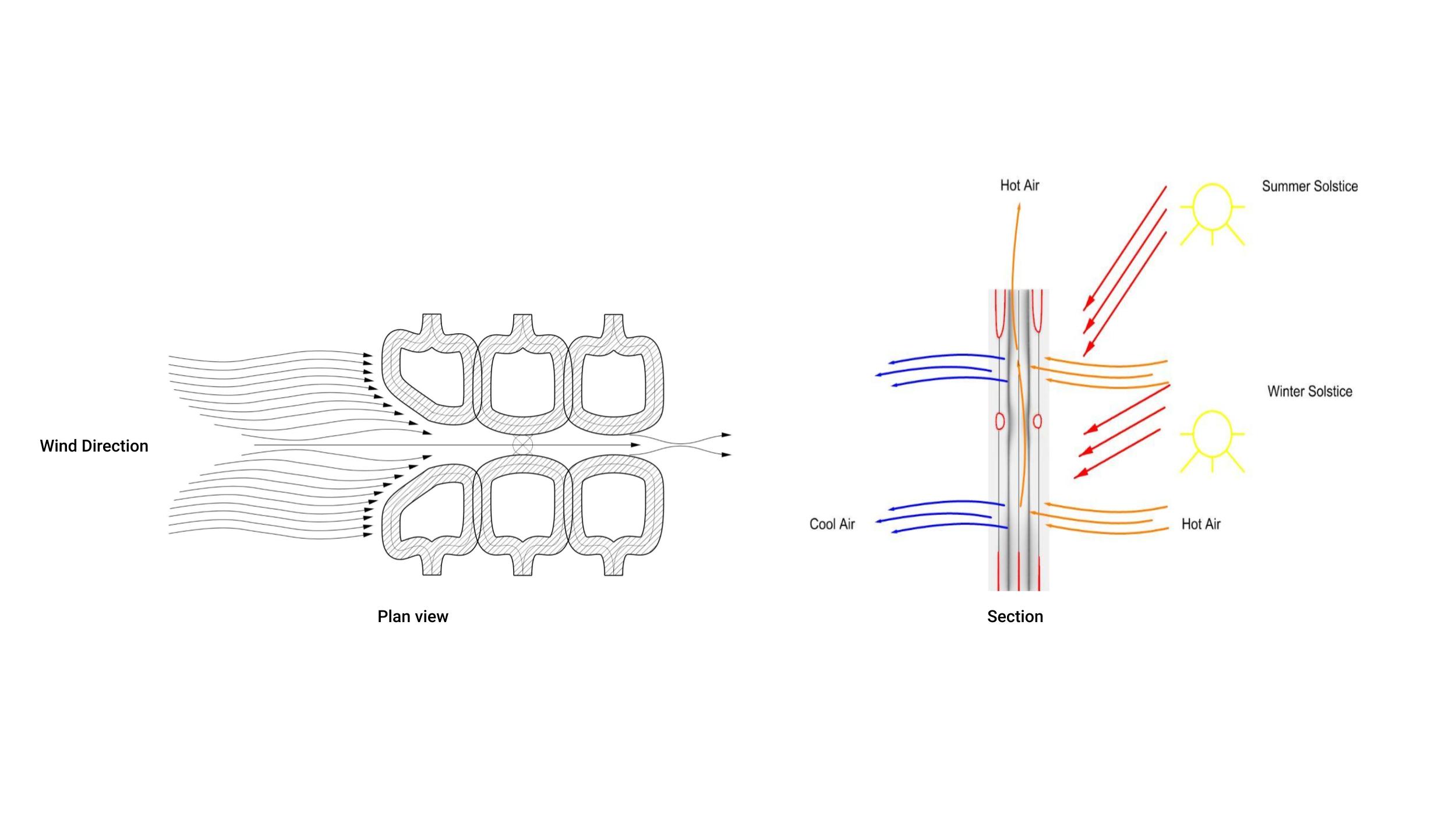
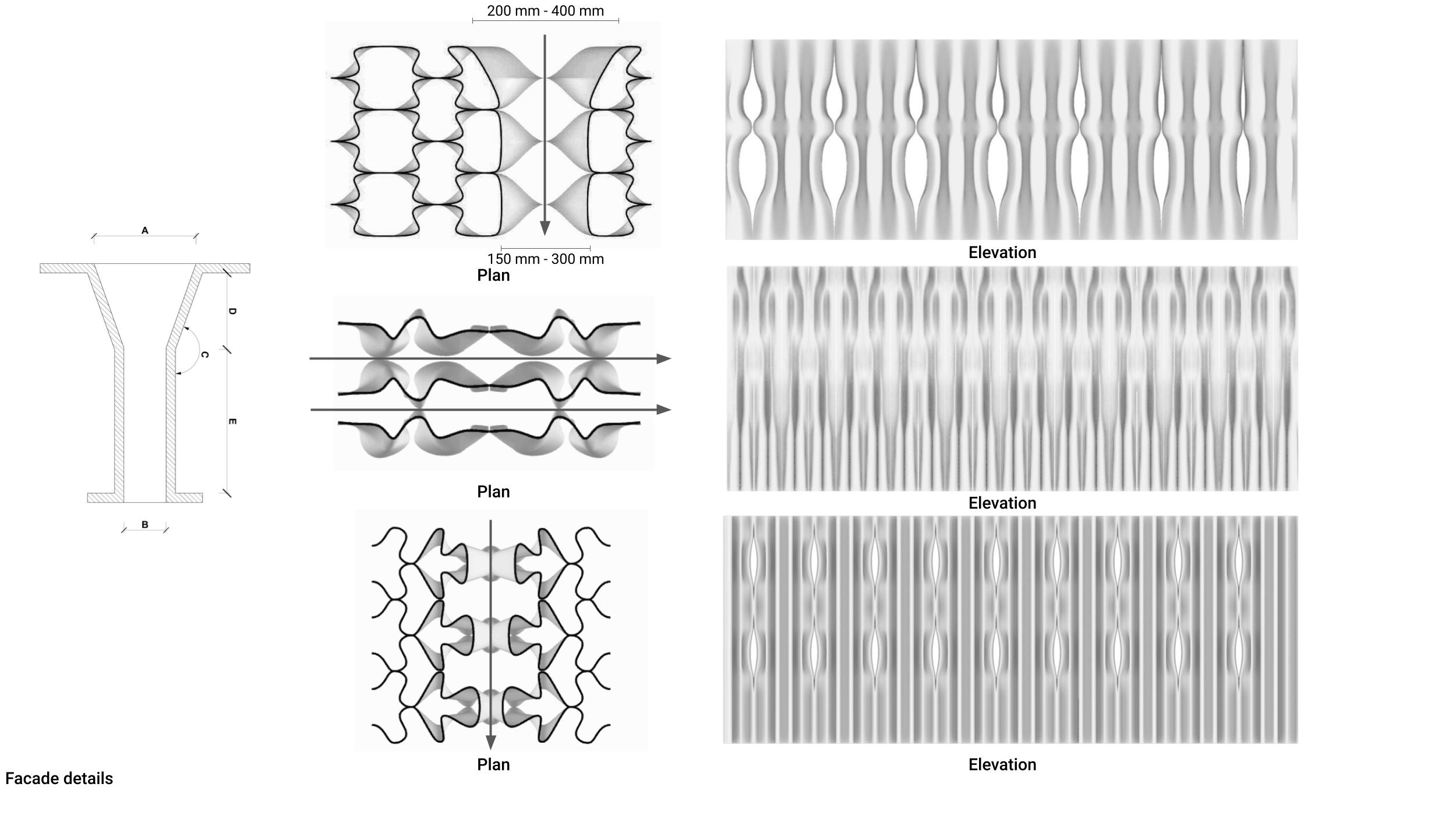
Self-shading

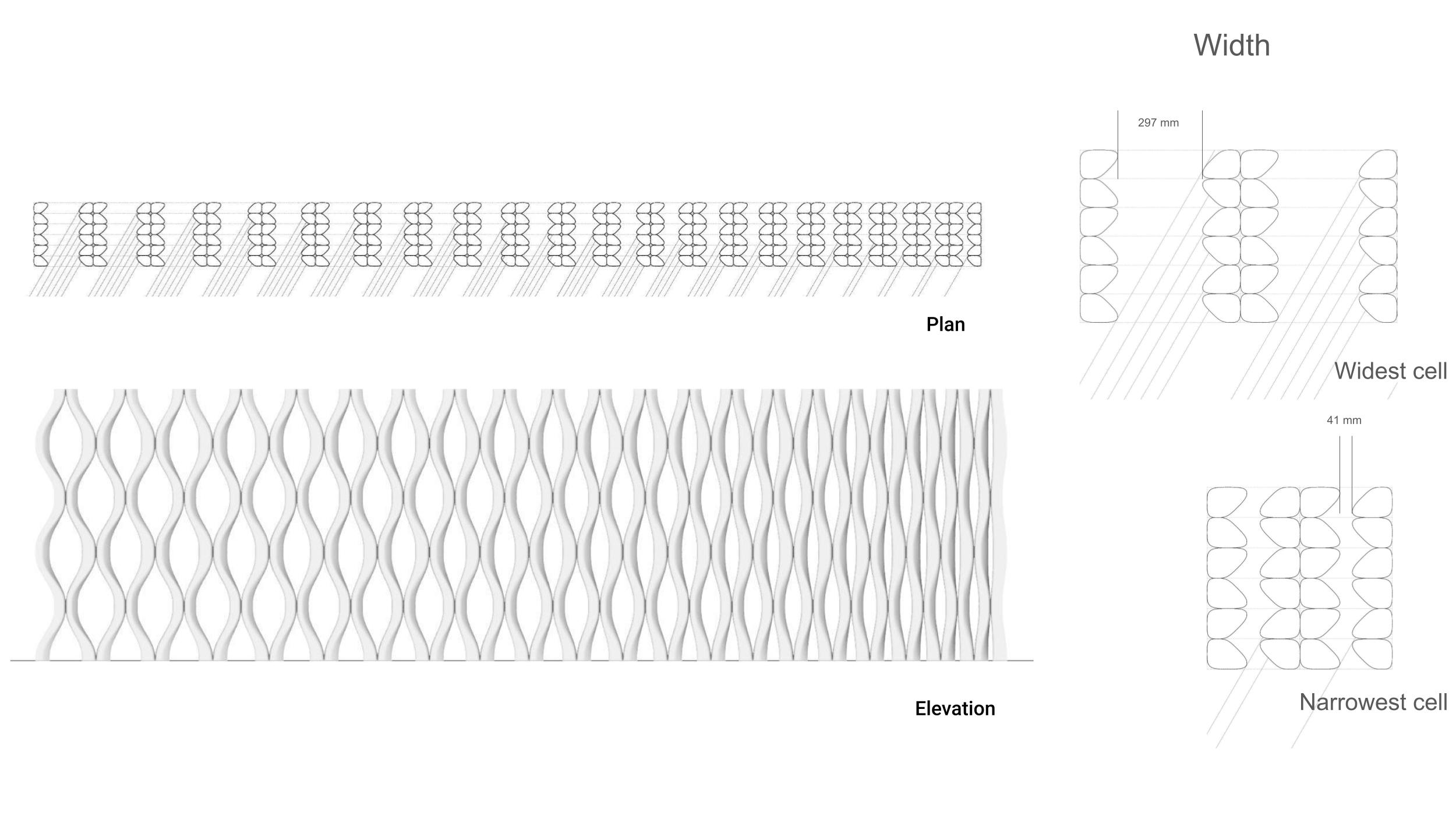
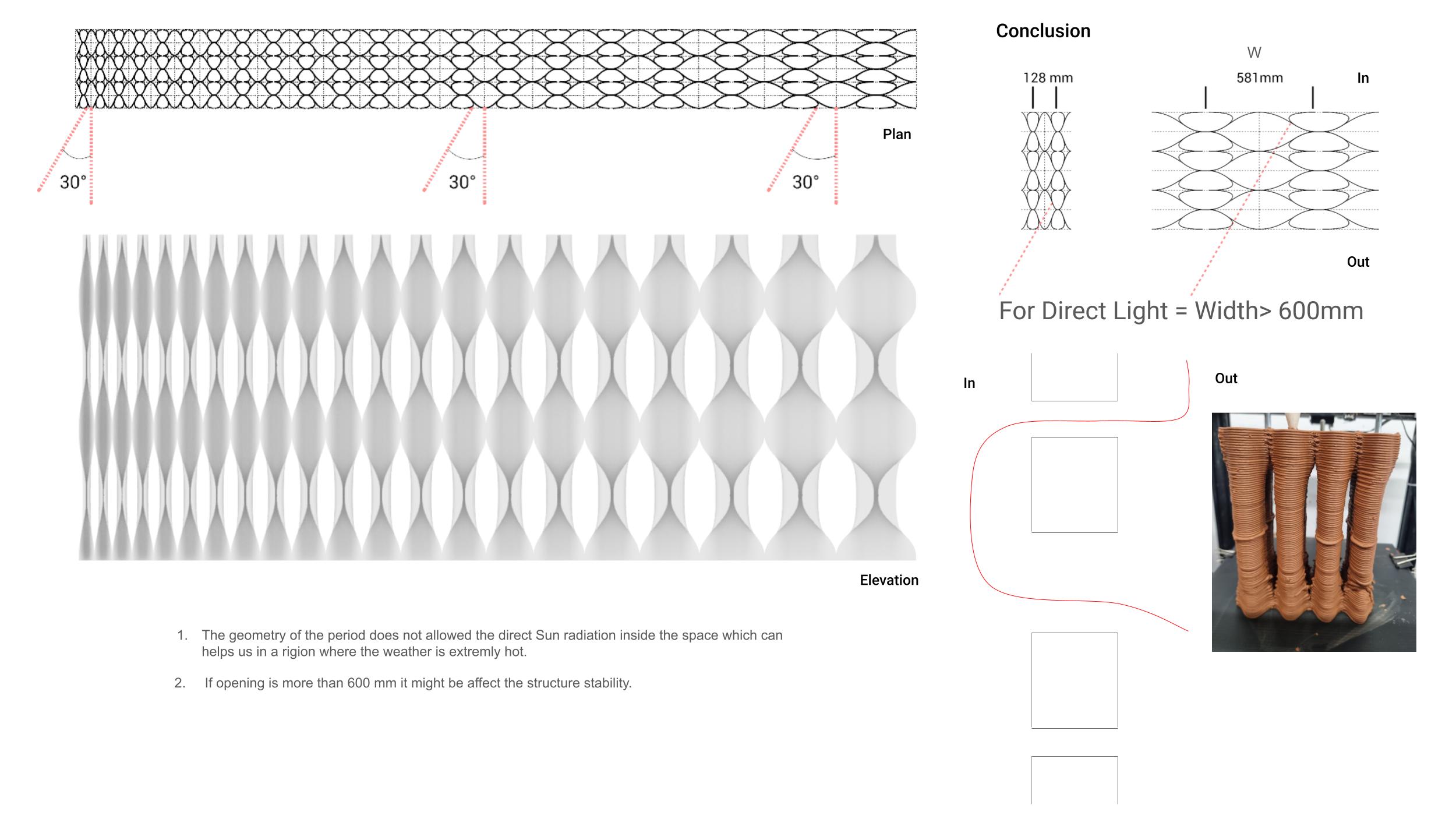
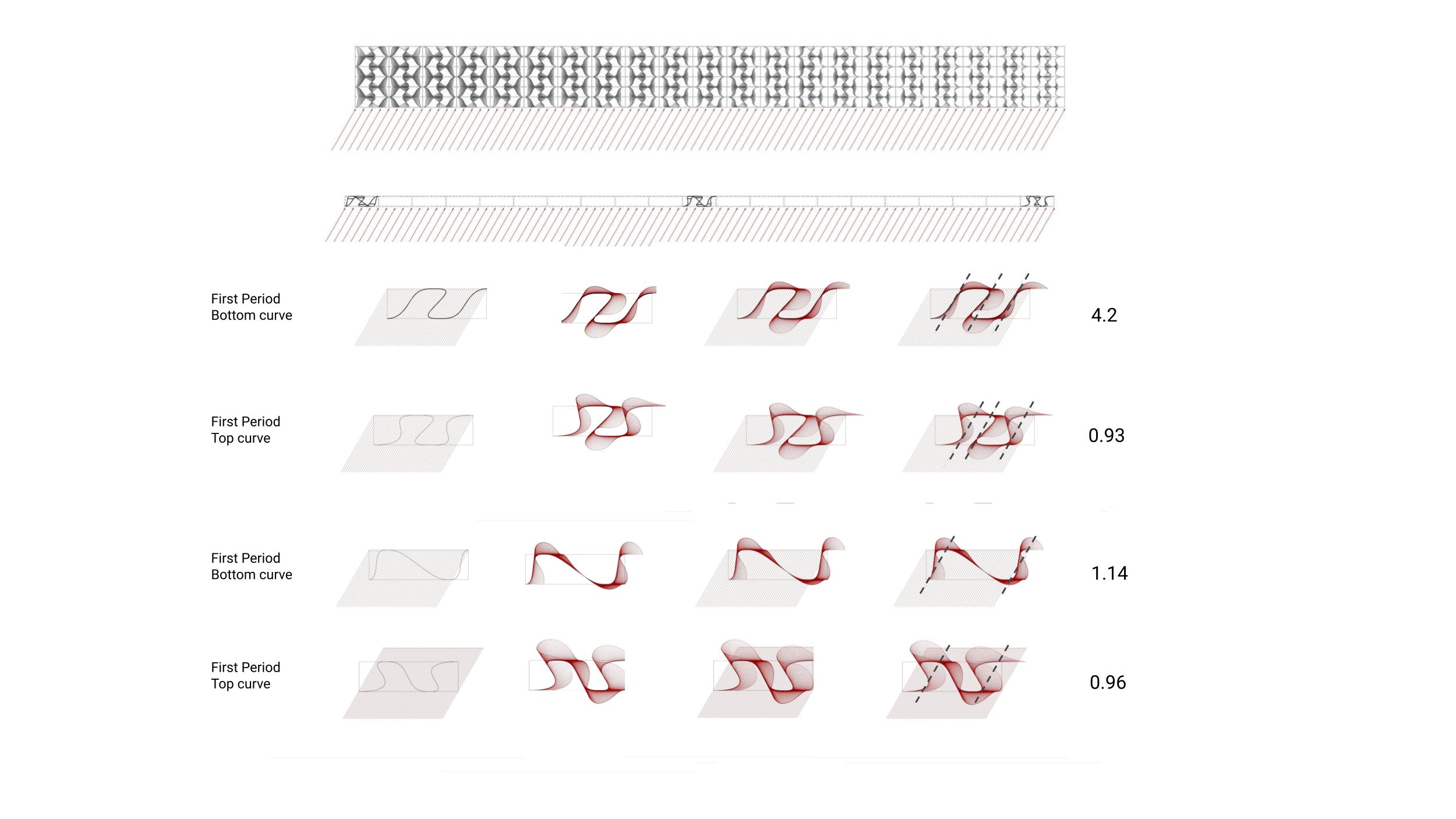
Lighting
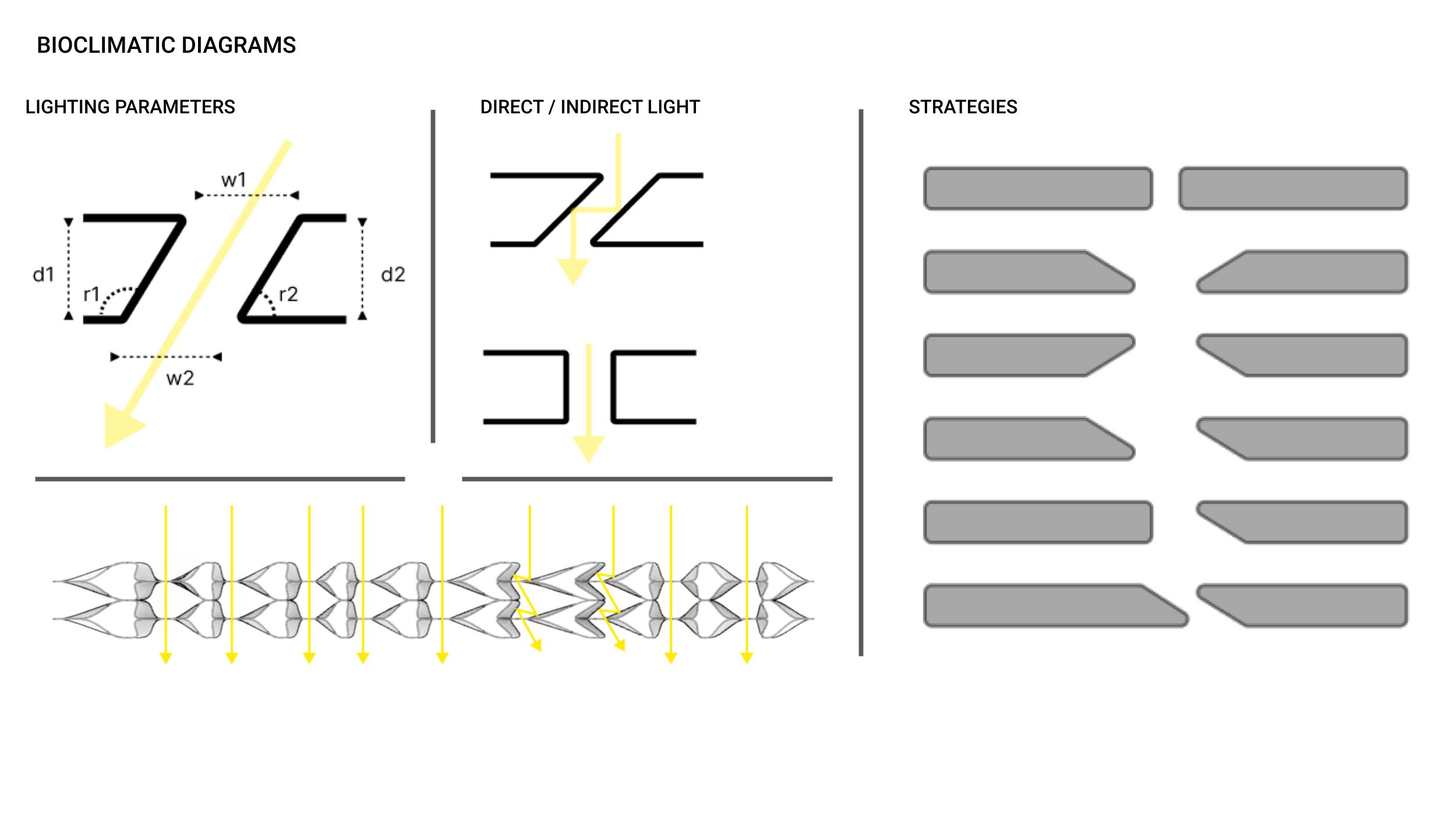
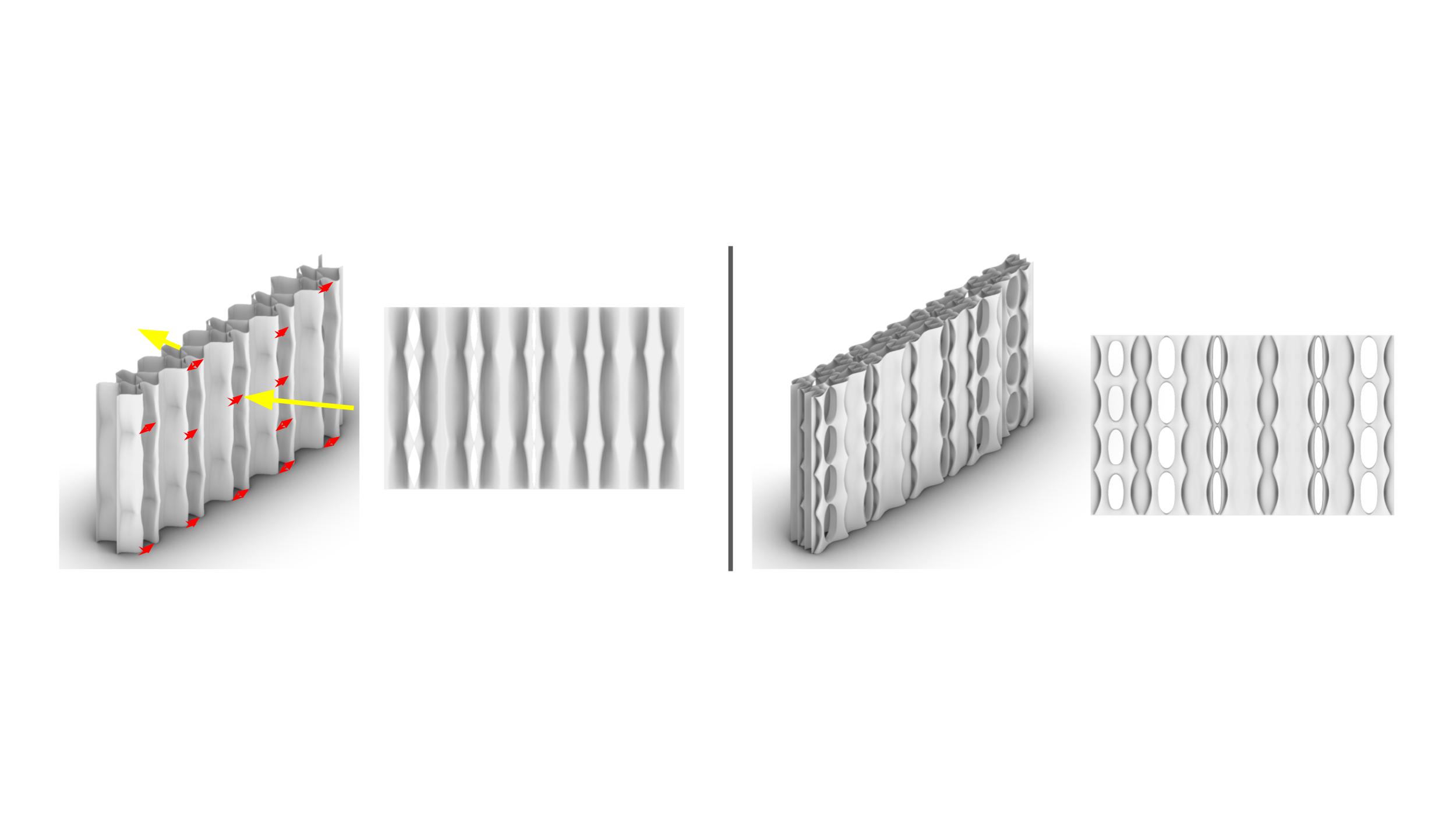
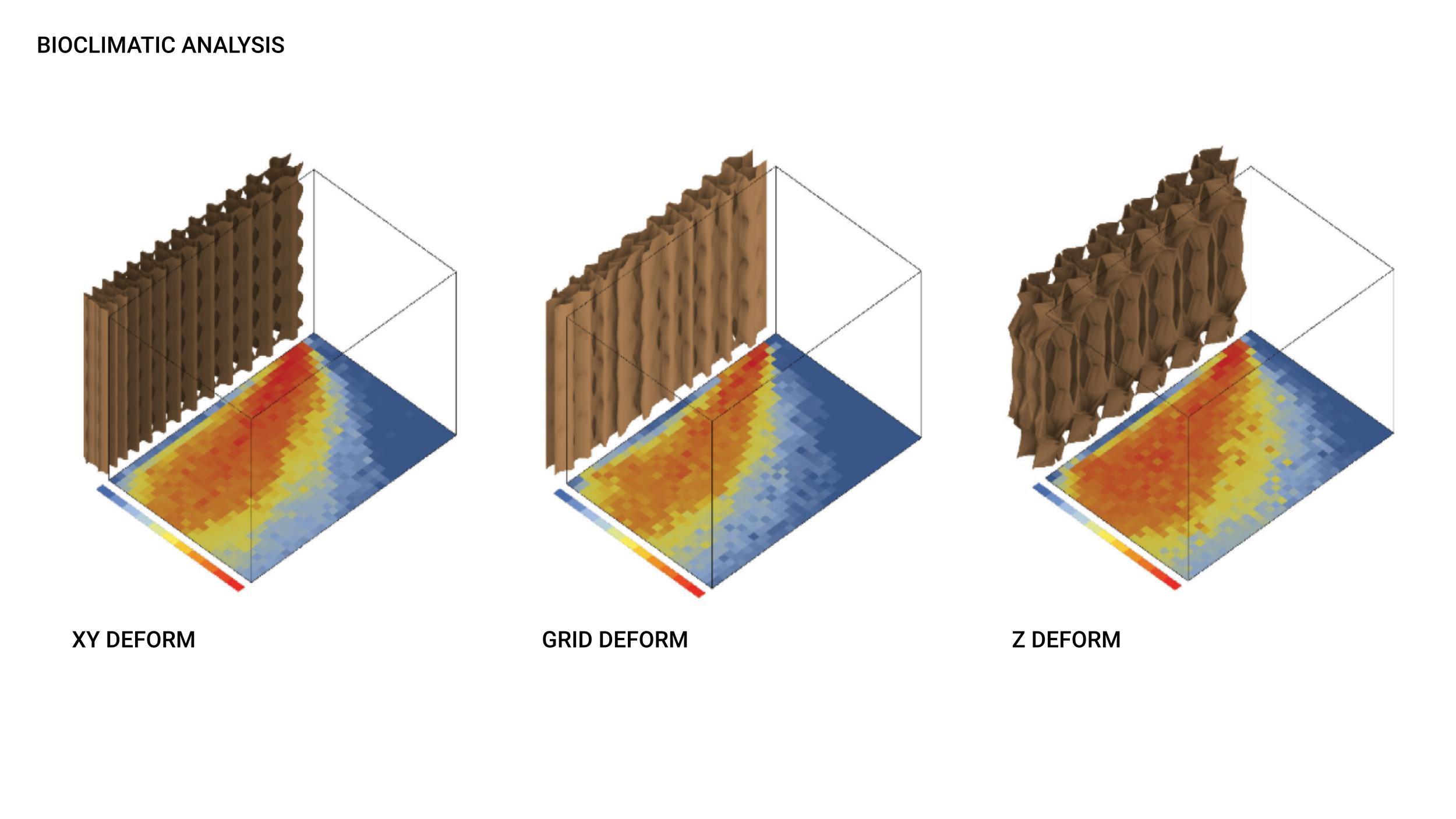
Ventilated Trombe Wall
Ventilated Trombe Wall: Creating thermal comfort in interior spaces through passive ventilation
Thermal Mass: The earth wall is used as thermal mass to store heat during the day and release it to indoor spaces in the evenings
Ventilation: supplements the natural conduction of the thermal mass with vent-facilitated convection. Vents are placed at the top and bottom of the space between the glass panel and masonry wall. As the air in this space is heated, it rises into the top vent, which redirects it into the home. At the same time, cold air from inside the home passes through the lower vent into this space, where it is heated and later redirected back into the home through the upper vent.
